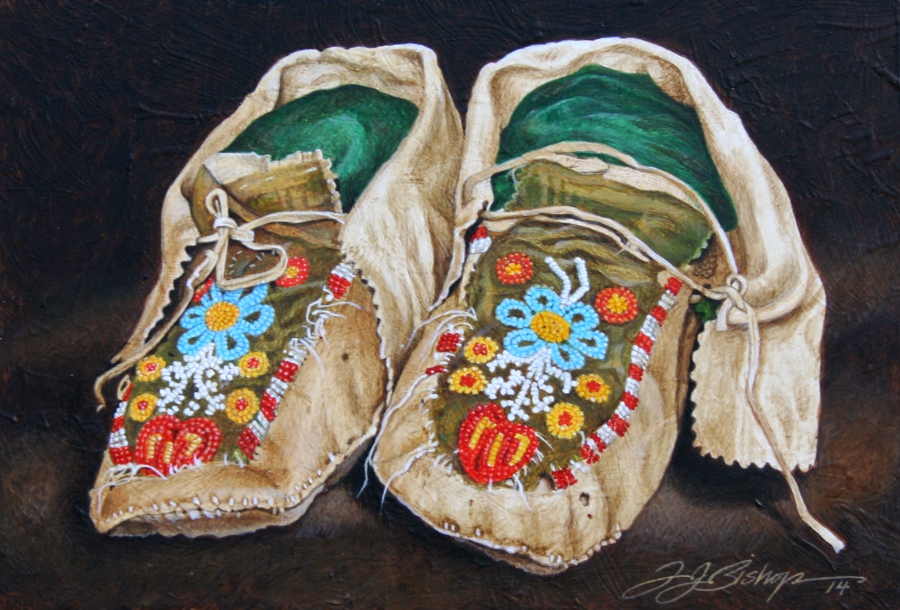Happy Feet
ATTENTIONS BUYERS! THANK YOU FOR YOUR INTEREST...Due to supply chain complications, please call us at 602-999-3598 before completing sn order so we can verify availability of items.
ORIGINAL PAINTING
Size - 7 X 10
More Information
The moccasins I’ve painted in “Happy Feet” were probably those worn by a young, Souix Indian child.
Although traditional Native American clothing varied widely from tribe to tribe, there was one nearly universal element, the Indian moccasin. A sturdy slipper-shaped type of shoe sewn from tanned leather. The word “moccasin” comes from an Algonquian Indian word (also spelled mocasin, mocassin, moccassin, or mocussin, depending on the language and transcriber), but that is only because Algonquians were the first Native Americans encountered by Europeans.
All American Indian moccasins were originally made of soft leather– usually deerskin– stitched together with sinew. Though the basic construction of moccasins was similar throughout North America, moccasin patterns were subtly different in nearly every tribe, and Indian people could often tell each other’s tribal affiliation simply from the design of their shoes.
Tribal differences included not only the cut of the moccasins, but also the extensive beadwork, quillwork, painted designs, and fringes many Indian people lavished on their moccasins. In some tribes hardened rawhide was used for the sole for added durability, and in others rabbit fur (or, later, sheep skin) was used to line the leather moccasins for added warmth. Both men and women wore moccasins, although in many tribes the decoration of male and female moccasins used a different pattern. Plains Indian women also wore moccasin boots sometimes, which were basically just women’s thigh-length leggings sewn to their moccasins for a one-piece look (this style of boot is very beautiful when fully quilled).










